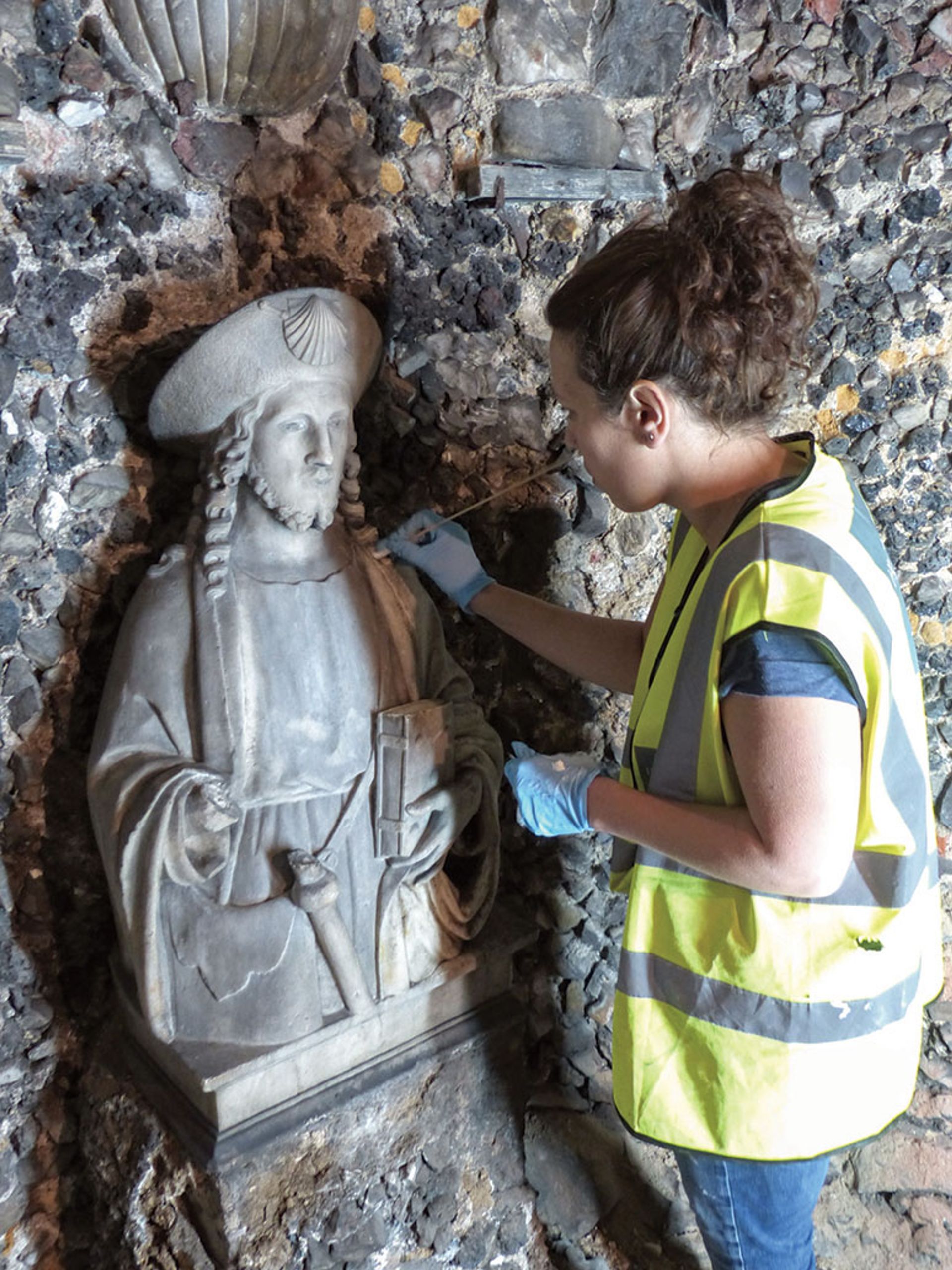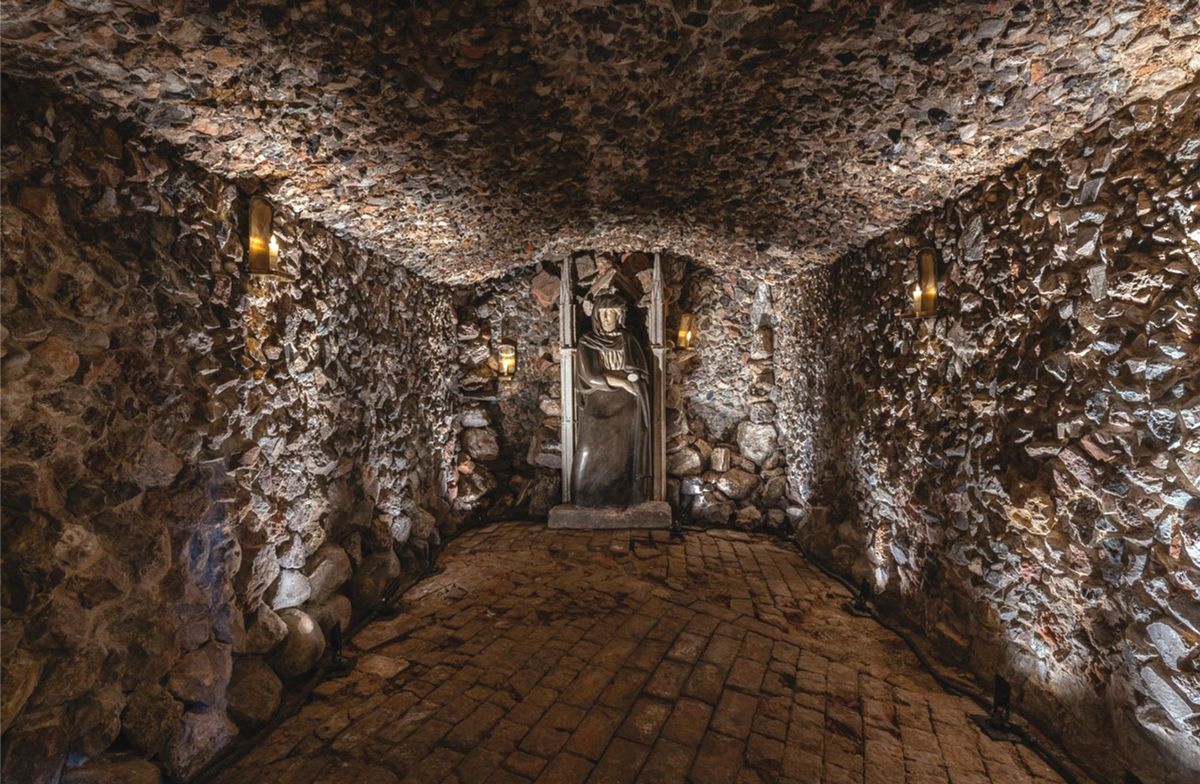Every day cars, buses and lorries rumble unwittingly over all that survives of one of the most famous gardens of Georgian England: the underground grotto tunnel that once led from the Thames-side home of the poet, satirist and garden designer Alexander Pope to his groves, arbours and temples.
His guests once arrived in Twickenham by river and passed through this man-made cave sparkling with rare minerals and fossils, and then up a gentle slope into his garden, perhaps pausing on the benches to recite a few lines of classical poetry and contemplate a brook of crystal water. Pope himself said it only lacked nymphs to make it perfect.
The tunnel now leads less salubriously from the red-brick cellars of one local school to the front yard of another, but it is still considered of such importance that it is Grade II* listed and on Historic England’s register of Heritage at Risk. An ambitious £400,000 restoration project, funded partly by the National Lottery Heritage Fund, is now being developed by the Pope’s Grotto Preservation Trust.
By 1719, Pope, whose health was fragile, had enough money from his revered translation of Homer’s Iliad to lease a plot of land, undeterred by smelly neighbours including a tannery and a chicken seller. He moved from grimy London with his mother and childhood nurse, built a modest villa and launched the project that occupied the rest of his life, the grotto and gardens admired by, among others, Samuel Johnson and Jonathan Swift.
Having decorated the grotto with shells and crystals, he became fascinated by geology on a spa visit to Bristol and started again, filling his grotto with mineral specimens laid in correct geological layers—one of many puzzles for the restorers. He begged building materials and specimens from friends, including cartloads of stone from Ralph Allen, who owned the quarries that built Bath; -stalagmites from Wookey Hole in Somerset; and distinctive hexagonal slices from the Giant’s Causeway in Antrim in Northern Ireland, donated by the physician and naturalist Sir Hans Sloane.

A conservator from Pope’s Grotto Preservation Trust © Pope’s Grotto Preservation Trust
Pope died in 1744, aged 56, but his creation was so famous that his gardener, John Serle, produced a now invaluable illustrated guide a year after his death. The house was demolished in 1807 by Lady Howe, who had wearied of literary pilgrims. Only the grotto-tunnel survived, and her cultural vandalism was pilloried by a neighbour, JMW Turner, whose sketch of the half-demolished house was titled Pope’s Villa at Twickenham, During its Dilapidation.
The poet’s sparkling stream, which a visitor claimed to have drunk from as late as 1842, has vanished, another restoration conundrum. However, there certainly is water, seeping down from the road, corroding the iron cramps holding the facing stones and minerals, and leaving the underlying brick structure showing. Plastic baskets of salvaged fragments are stacked by the iron gates.
Though the original river approach can only be recreated digitally, the gaps left by collapses and souvenir hunters who pinched bits will be filled, and Pope’s beguiling mixture of glitter and gloom recreated.
Occasional booked visits—when the school is closed, since the only access is through the pupils’ dining area—will continue until work starts next year, but the trust then plans to open the grotto to the public more regularly.


